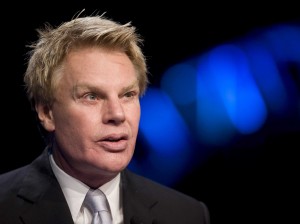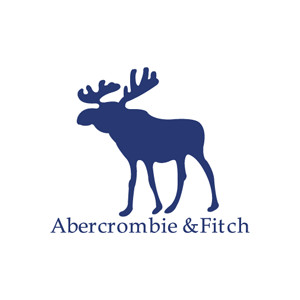 “In every school there are the cool and popular kids, and then there are the not-so-cool kids. We go after the attractive all-American kid with a great attitude and a lot of friends. A lot of people don’t belong [in our clothes], and they can’t belong. Are we exclusionary? Absolutely.”
“In every school there are the cool and popular kids, and then there are the not-so-cool kids. We go after the attractive all-American kid with a great attitude and a lot of friends. A lot of people don’t belong [in our clothes], and they can’t belong. Are we exclusionary? Absolutely.”
In a 2006 interview with Salon Magazine, the comments above were made by Mike Jeffries, CEO of Abercrombie and Fitch since 1984.
When the comments were brought up again in May 2013 in a Business Insider interview with one author of “The New Rules of Retail,” Robin Lewis, Jeffries issued an apology for his remarks made seven years ago.
“We are completely opposed to any discrimination, bullying, derogatory characterizations or other anti-social behavior based on race, gender, body type or other individual characteristics,” he concluded.
Abercrombie has a history of getting in trouble for racial discrimination amongst job applicants and employees, placing less “attractive” employees off the selling floor, making T-shirts that insulted Taylor Swift and portrayed offensive stereotypes, releasing adds that have been criticized for being too inappropriate for teens, and selling revealing, padded bikinis as part of their kids line.
There has also been controversy over the fact that Abercrombie does not sell woman’s clothing over a size large or pants sizes over a 10.
“We want to market to cool, good-looking people. We don’t market to anyone other than that,” said Jeffries in the past.
Two of Abercrombie’s biggest competitors, H&M and American Eagle, both carry all sizes of clothing; H&M has a plus-sized line and American Eagle offers up to size XXL.
Abercrombie doesn’t carry plus-sizes because they think seeing girls who aren’t what society sees as the perfect image wearing their clothing will turn away their targeted audience—“the cool kids.”
Abercrombie carries larger sizes in men’s for big guys who aren’t necessarily overweight.
“In my opinion, [Jeffries] is basically saying that there is only one type of girl and we have to be perfect. I think this is wrong and makes girls feel bad about themselves,” said sophomore Valeria Rodriguez.
Jeffries’ marketing philosophy is not only morally wrong because it makes girls who don’t look like Abercrombie models feel self-conscious about their appearances, but it’s also simply not accurate.
I don’t agree that if someone who fits Jeffries’ idea of the perfect Abercrombie shopper sees a plus-sized shopper wearing Abercrombie, it’s going to turn them away from the brand. Cute clothes are cute clothes—who is wearing them shouldn’t turn people away from them.
Abercrombie blatantly gets its idea that they want only society’s idea of beautiful people wearing their clothes by their models who appear on huge billboards and outside their store to take pictures.
On the other hand, H&M advertised some of its 2013 summer swimsuits on a plus-sized model.
It’s hard to understand why the CEO of Abercrombie is telling people, “I really don’t care what anyone other than our target customer thinks.” He is turning more business away from his store. Instead of being concerned with the income of his company, Jeffries focuses on the image of his store.
Abercrombie could be selling in all sizes and to a wider range of customers, making more money, but they don’t agree because they think that would decrease their sales instead.
Nevertheless, it seems Abercrombie is wrong—the income of Abercrombie has been continually decreasing for the past five years.
Similarly, Urban Outfitters, another teen apparel store, has gotten into trouble for countless reasons that seem obvious to most.
Urban Outfitters has received criticism for selling products depicting pill bottle-shapes, alcohol, marijuana symbols, cuss words, a six-pointed star badge resembling those of the Holocaust, clothes and accessories described as Navajo style, allegedly using another designer’s jewelry design as their own, “accidentally” making color options for a shirt “White/Charcoal” and “Obama/Black,” almost immediately taking back shirts supporting gay marriage after they were released, selling a shirt saying “Eat Less,” selling a shirt with a racy photo on it without the model’s permission, and more.
Why stores whose target audience is teenagers can’t see how these derogatory things might upset people is shocking.
Why Mike Jeffries could not tell his statements saying his store aims to sell only to “cool kids” would receive criticism is more shocking. And the fact that if you go to an Abercrombie and Fitch store or online you still cannot purchase a size large in women’s clothing is sad.
The store that was once for outdoors men has been transformed into a store of preppy teen clothing that hopes to send a message of exclusivity, popularity, and beauty.
Too Big to Fit the Ideal
December 3, 2013

0
Donate to The Fourth Estate
$50
$500
Contributed
Our Goal
Your donation will support the student journalists of Laguna Blanca School. Your contribution will allow us to purchase equipment and cover our annual website hosting costs.
































